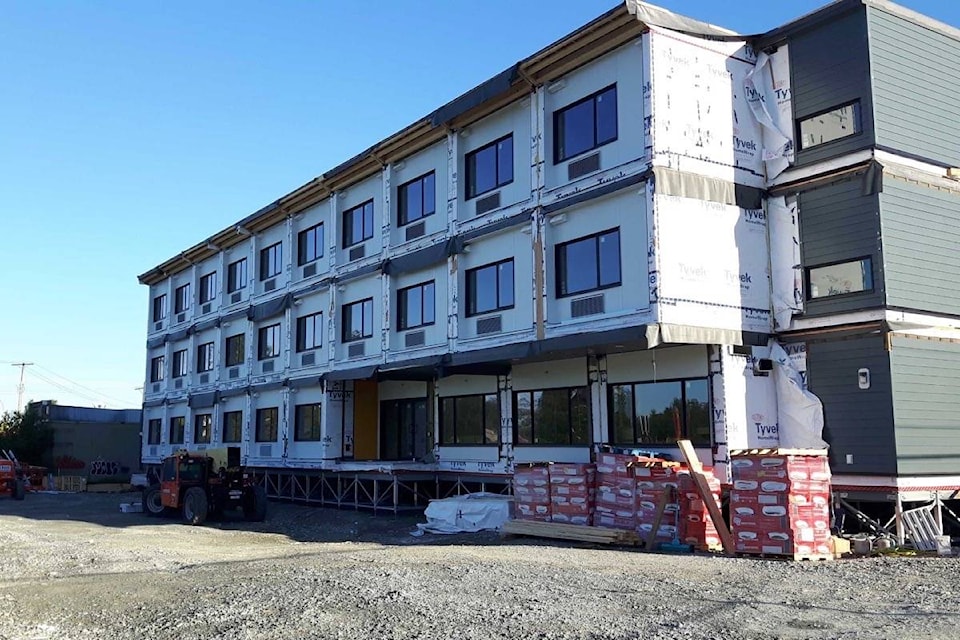Kelowna��ѻ��ý�s real estate development industry is facing major uncertainty as FortisBC warns it may not be able to guarantee power for new projects in the coming years.
��ѻ��ý�In recent weeks, several developers have been informed that power cannot be assured for projects until 2027 to 2029,��ѻ��ý� states an Urban Development Institute (UDI) media release. ��ѻ��ý�Without a reliable electricity supply, development in the region is at risk of stalling, with some projects potentially being abandoned altogether.��ѻ��ý�
UDI chair Dave Sargent told Black Press Media that while the organization has been working with FortisBC on the issue for some time, the situation remains unclear.
��ѻ��ý�What we��ѻ��ý�re being told right now is temporary construction power can be provided,��ѻ��ý� he said. ��ѻ��ý�But certainty on a date as to when a project could be energized is up in the air right now. We wanted to ensure people are aware that there is a potential issue in the short-term��ѻ��ý�the next two to three years is our understanding.��ѻ��ý�
Sargent noted that FortisBC is upgrading resources in some areas of the city. ��ѻ��ý�But we aren��ѻ��ý�t sure when those upgrades are coming and how to plan in the interim,��ѻ��ý� he said.
One of UDI��ѻ��ý�s biggest concerns is potential development in the area served by the Saucier substation, which includes Kelowna General Hospital and the city��ѻ��ý�s central core.
��ѻ��ý�The implications that come with that are if you were to build a building today, would some of those substation issues be resolved by the time the building is done? That��ѻ��ý�s a significant risk.��ѻ��ý�
Sargent added that UDI has faced frustration when trying to determine how much power FortisBC can provide for a project.
��ѻ��ý�Maybe we can change our heating system,��ѻ��ý� he said. ��ѻ��ý�Maybe we can make a difference in the envelope of the building to reduce the energy��ѻ��ý�and not being able to get an answer to that.��ѻ��ý�
Gary Toft, senior advisor for corporate communications with FortisBC, acknowledged the concerns and said the company is working to address them as quickly as possible.
��ѻ��ý�As power providers across North America are expanding their electricity systems, FortisBC is seeing an increase in the amount of time it takes to receive important equipment and supplies, such as transformers, breakers, specialized equipment and new technology,��ѻ��ý� Toft said.
He noted that a transformer for a substation that once took a year could now take up to three years for delivery.
��ѻ��ý�FortisBC has taken action to help mitigate delays wherever possible, including purchasing and pre-ordering these key materials and equipment,��ѻ��ý� Toft said.
In 2024, FortisBC requested approval from the British Columbia Utilities Commission (BCUC) to upgrade substations in Kelowna and several smaller communities, as well as transmission lines serving the South Okanagan. A decision is expected this spring.
Toft added that the company continues to work with the development community and the City of Kelowna on requests for large buildings with significant and concentrated electricity demand to ensure they can be connected as quickly as possible.
He pointed out that over the past five years, ��ѻ��ý�close to 6,000 families and businesses have been connected to electricity service, and nearly 8,000 multi-unit homes and businesses will be connected in the future.��ѻ��ý�
The UDI media release acknowledged FortisBC��ѻ��ý�s commitment to invest $157 million in new electricity infrastructure projects but stated it is ��ѻ��ý�neither sufficient nor timely to accommodate Kelowna��ѻ��ý�s rapid population growth.��ѻ��ý�
Ian Grannary, an electrical engineer, UDI board member, and principal with Smith + Andersen in Kelowna, helps coordinate the energizing of projects with FortisBC.
��ѻ��ý�Where I think they��ѻ��ý�ve seen issues is with some of the smaller buildings,��ѻ��ý� he said. ��ѻ��ý�The 50 or 80 units. If they can��ѻ��ý�t get power for two or three years that does impact their schedule.��ѻ��ý�
Grannary said he is aware of at least one development in the city that has run into power availability issues. He also pointed to other factors affecting electricity demand.
��ѻ��ý�It��ѻ��ý�s the provincial government changing the building code to decarbonize and use less natural gas, which drives the electrical load up,��ѻ��ý� he said. ��ѻ��ý�The City of Kelowna requires us to put energized stalls (EV) into every parking space for a condo and 25 per cent for a rental building. So FortisBC has to allow for all that day one.��ѻ��ý�
Sargent stressed that two-to-three-year delays are serious and must be addressed.
��ѻ��ý�If you can��ѻ��ý�t guarantee power to these sites, most people won��ѻ��ý�t move forward with the project in the interim.��ѻ��ý�
He noted that stalled or abandoned projects could affect Kelowna��ѻ��ý�s housing targets as determined by the province.
��ѻ��ý�The reason for that is because the areas identified are areas that would be looking to have additional density.��ѻ��ý�
UDI plans to meet with local Conservative MLAs Kristina Loewen and Gavin Dew to relay their concerns, as well as reach out to city council before approaching the provincial government.
Sargent said discussions with FortisBC are ongoing.
��ѻ��ý�The communication continues,��ѻ��ý� he said. ��ѻ��ý�Really what this was about was to ensure that anyone looking to do a project in these areas is keenly aware of the issue.��ѻ��ý�

